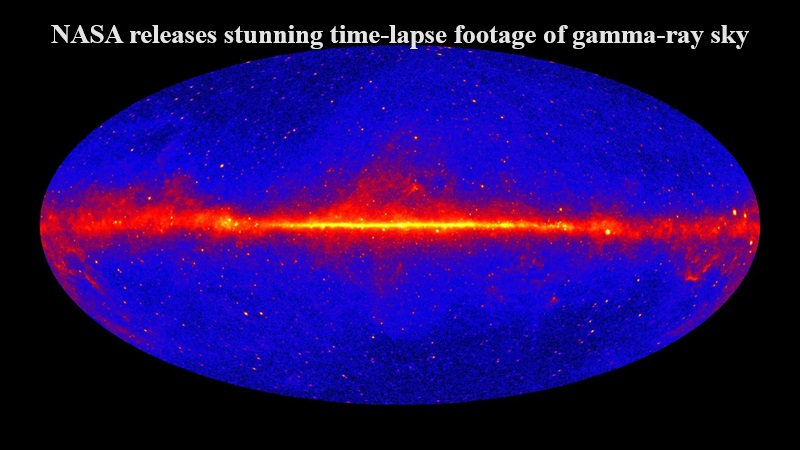
Scientists have created a captivating time-lapse movie using 14 years of data from NASA’s Fermi Gamma-ray Space Telescope. The footage, compiled by Seth Digel, a senior staff scientist at SLAC National Accelerator Laboratory, captures the Sun moving across the sky against a backdrop of high-energy sources from both our Milky Way galaxy and beyond.
The time-lapse reveals the bright, steady gamma-ray glow of the Milky Way interspersed with intense, days-long flares emanating from near-light-speed jets fueled by supermassive black holes in distant galaxy cores. These eruptions, visible across the sky, occurred millions to billions of years ago, with their light only reaching Fermi’s sensors now.
Gamma rays, the most energetic form of light, are the focus of the movie, showcasing intensities above 200 million electron volts detected by Fermi’s Large Area Telescope between August 2008 and August 2022. The brighter colors in the time-lapse denote locations with more potent gamma-ray sources. For context, visible light ranges between 2 and 3 electron volts.
The time-lapse presents two views of the sky. The first is a rectangular view showing the entire sky with the Milky Way’s central plane as the focal point, revealing gamma rays produced by cosmic rays colliding with interstellar gas and starlight. The second view, centered on our galaxy’s poles, shows distant galaxies, particularly blazars, each hosting a central black hole with a mass exceeding a million suns.
Despite its captivating display, the time-lapse doesn’t capture shorter events like gamma-ray bursts, the universe’s most powerful explosions, due to data processing limitations that span several days for image refinement.
The Fermi Gamma-ray Space Telescope, managed by Goddard Space Flight Center and developed in partnership with the US Department of Energy, contributes to the study of the intersection between astrophysics and particle physics.

Post Your Comments